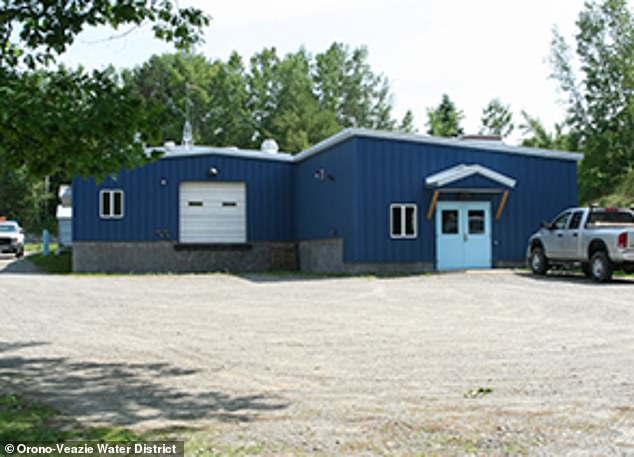Maine residents warned the tap water may smell and taste like CHLORINE this week as officials scramble to wipe Legionnaires’ bacteria from the water supply
- The Maine Centers for Disease Control and Prevention found the bacteria in two separate locations during testing at the Orono-Veazie Water District
- Legionnaires’ is a severe form of pneumonia caused by legionella bacteria
- Health officials are increasing chlorine levels to eliminate the bacteria from the water supply
- It has not yet been connected to six cases of Legionnaires’ diagnosed in Bangor, about 10 miles away from Orono
Maine health officials say they have detected bacteria responsible for Legionnaires’ disease in samples from a water utility company.
The bacteria was found in two separate locations during testing at the Orono-Veazie Water District, according to the state’s Centers for Disease Control and Prevention.
Legionnaires’ is a severe form of pneumonia caused by inhaling water droplets containing legionella bacteria and, when left untreated, can cause fatal neurological complications.
The agency said in a news release on Friday that it is increasing chlorine levels to eliminate the bacteria – but it is still safe to drink and use.
It comes as officials investigate a mysterious outbreak of Legionnaires’ disease in Bangor, about 10 miles away from Orono.

The Maine Centers for Disease Control and Prevention said on Friday it found legionella bacteria in two separate locations during testing at the Orono-Veazie Water District (pictured)
‘Customers of the Orono-Veazie Water District may smell chlorine in their water,’ Jackie Farwell, a spokeswoman for the Maine Department of Health and Human Services, told the Bangor Daily News.
‘This increased level of chlorine is not harmful, and the water remains safe to drink and use.’
According to the Maine CDC, none of the six cases in Bangor have been connected to the Orono-Veazie Water District at this point.
About one new case each month has been diagnosed in the area since November 2018, reported the Portland Press Herald.
The CDC said all six individuals were hospitalized and that one died, although it’s unclear if legionella bacteria was to blame.
Unlike other illnesses, which are transmitted through person-to-person contact, sufferers fall sick by inhaling small droplets of water with legionella bacteria.
The bacteria can multiply in places such as hot tubs, water tanks and large plumbing systems.
Symptoms develop between two and 10 days after inhaling legionella bacteria. The disease typically begins with a headache, chills, high fever, and muscle pain.
On the second or third day, symptoms progress to coughing, chest pain, trouble breathing, nausea, vomiting and diarrhea.
Between 10,000 and 18,000 Americans are infected each year.
Most people recover with antibiotics, but those with weakened immune systems or who have chronic lung diseases can form neurological complications that can be fatal.
According to the US Centers for Disease Control and Prevention, one in 10 people with the disease die.
